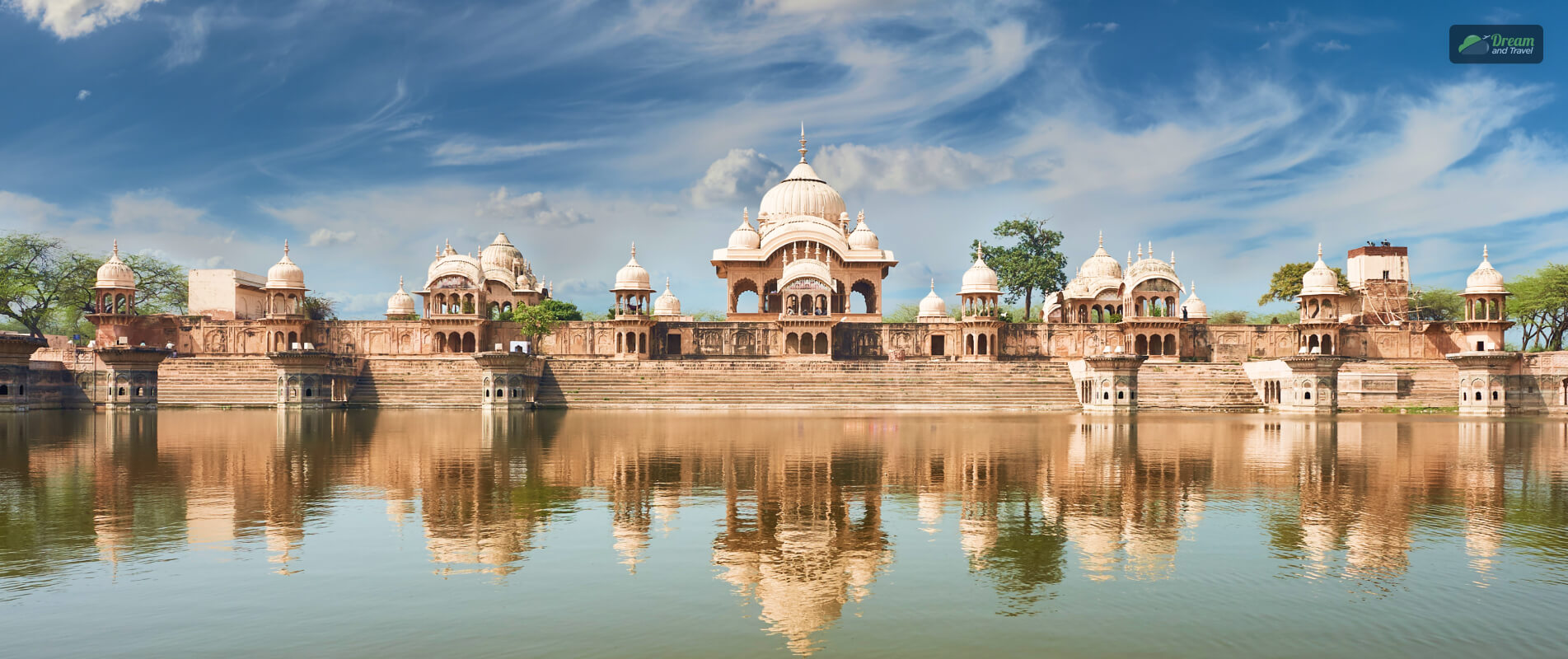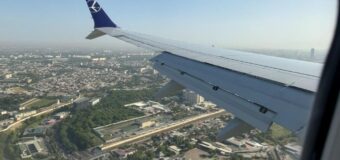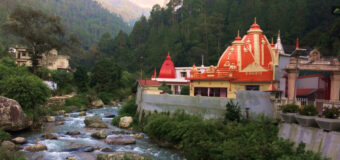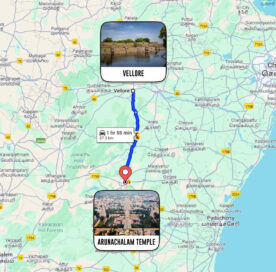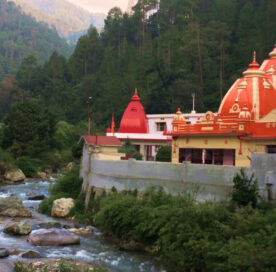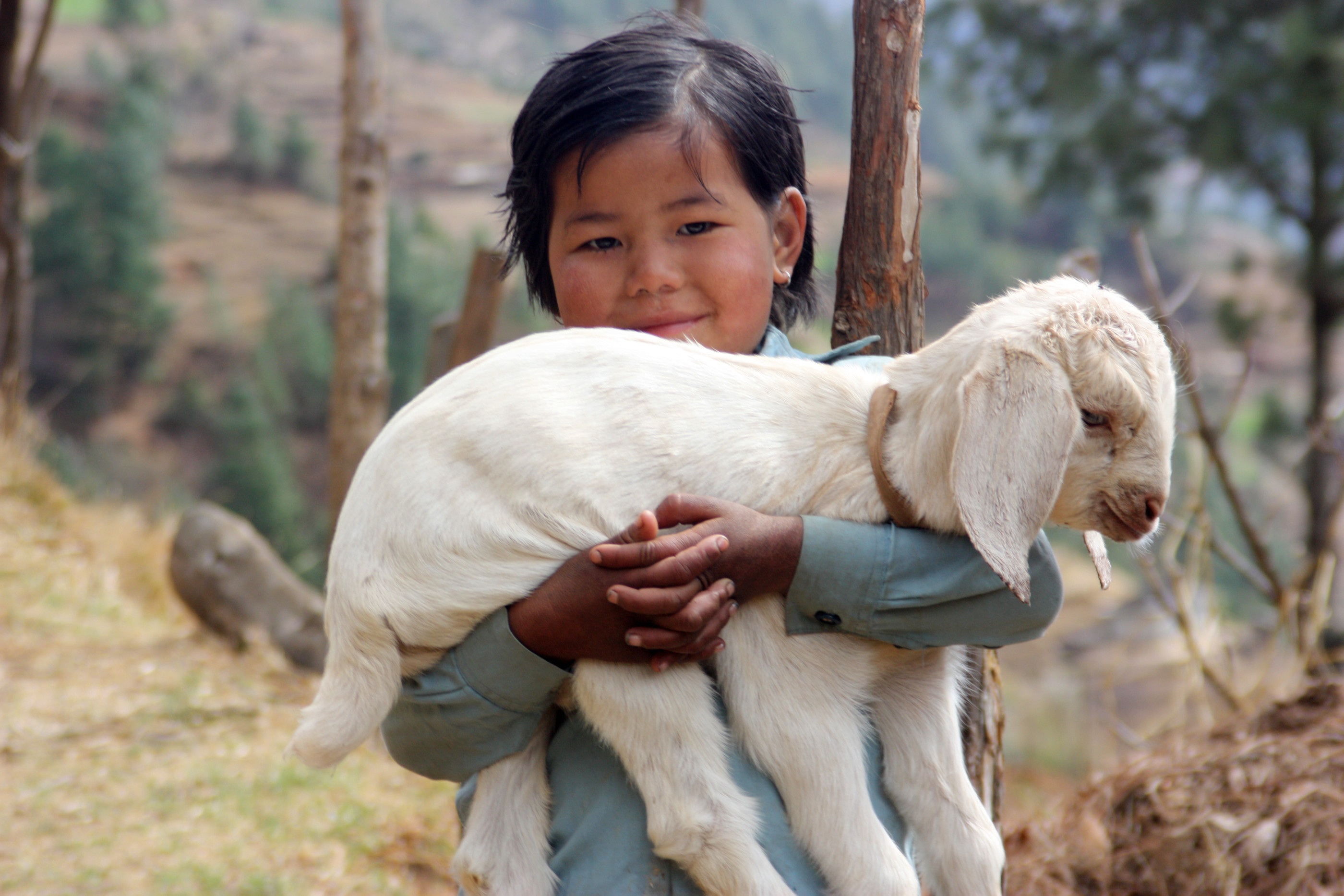Radhe Radhe!
I have been fortunate enough to visit Barsana, the birthplace of Radha Rani in the Braj Dham during the last Holi. Barsana is not just a temple town where religious people visit. It’s a divine land with the stories of the eternal love saga of Radha and Krishna reverberating in the air.
Also known as Brahmasaran, Barsana is home to the revered Radha Rani Temple or Sheerji Temple, located on a ridge.
However, while the divine acts and stories of Radha Krishna reverberate in the air of Barsana, each temple here has a historical significance. The temples and other Barsana places to visit stand out with their unique architectural value.
Moreover, visiting Barsana is a unique cultural experience thanks to its distinctive cuisine and festivals such as Lathmar Holi and Radhastami. In addition, the Barsana Hills, known for their spiritual significance, are going to be transformed into eco-tourism hotspots.
In this Dream and Travel Guide, I will talk about the famous places to visit in Barsana, why the Barsana Dham is so special, and more.
The Key Areas Covered Are:
- Where Is Barsana? How To Reach Barsana?
- Why Is Barsana So Famous? Know The Significance Of The Barsana Dham
- What Are The Barsana Places To Visit?
- What Are The Four Hills Of Barsana? Why Are They So Famous?
- How Are The Barsana Hills Transforming Into Ecotourism Hotspots?
- Barsana Places To Visit: Frequently Asked Questions (FAQs)
Where Is Barsana? How To Reach Barsana?
Barsana is in the Braj region of Mathura District of Uttar Pradesh. The Mathura Junction (MTJ) is the nearest railway station to Barsana, and it is located around 50 km away. You will get a local bus or taxi, or you can rent a car to reach Barsana.
Local buses are also available from Vrindavan, another important destination for spiritual tourism in India.
Agra Airport, located at a distance of 100 km, is the nearest airport to Barsana. However, the Indira Gandhi International Airport (150 km) in Delhi is a better choice due to more connectivity to cities across the country and more flight options.
Nevertheless, from both these airports, you will have to take a train to Mathura and then reach Barsana by road.
Why Is Barsana So Famous? Know The Significance Of The Barsana Dham
Barsana is famous for its deep connection to Radha Rani. As the birthplace of Sheerji, it is also a part of the Krishna Pilgrimage Circuit, connecting:
- Dwarka in Gujarat
- Jaipur, Sikar, and Nathdwara in Rajasthan
- Kurukshetra in Haryana
- Mathura, Vrindavan, Gokul, Barsana, Nandgaon, and Govardhan in Uttar Pradesh
- Puri in Odisha
Further, Barsana has a mention in the ancient scriptures of Hinduism, the oldest religion in the world.
In the Varaha Purana, Barsana is a place where Lord Brahma took the form of a hill to witness the Dibya Prem or Divine Love of Shri Krishna and Radharani.
Barsana is also mentioned in the Brahmavaivarta Purana, Padma Purana, and Bhakti scriptures such as the Harivamsa Purana.
Moreover, Bhakti Ratnakara, a revered text for the followers of Chaitanya Mahaprabhu, and authored by Narahari Chakravarti Thakur, describes Barsana as Vrishabhanu-Pura, and it says,
“Vrishabhanu-Pura e, Barsana Nama Koy
Paravata Samipe Vrishanbhanura Aloy
Apurba Parvata – etha Vajendrakumara
Karilena Dana-lila anya agochara.”
When roughly translated, it means that Behold Vrishabhanupura, which is called Barsana. Here, the house of Vrishnabhanu Maharaj is near the mountain where Vajendrakumara or Shri Krishna performed dana-lila, or his divine deeds, away from the sight of others.
Today, the 5000-year temple of Radharani is the crown jewel of Barsana, and Lathmar Holi, where women hit men with sticks, is also one of the main attractions of the town.
What Are The Barsana Places To Visit?
The Barsana places to visit are all about finding solace and building that spiritual connection. Of course, the Radha Rani Mandir is the main attraction.
However, there are many places that will transport you to the Dwapara Yuga, in which Lord Vishnu appeared as Lord Krishna to establish Dharma or Good over Adharma or evil.
1. Radha Rani Mandir (Barsana Temple)
Temple Hours: 5 AM to 2 PM and 5 PM to 9 PM
Also known as the Ladli Lal Temple or the Shriji Temple, the Radha Rani temple is located on the Bhanugarh Hill. The 5,000-year-old temple is beautifully built with red sandstone, pillars, and arches, and is a testament to the signature Mughal-style architecture.
The red and white sandstones used in the temple symbolize the eternal or divine love of Radha and Krishna.
You will have to climb at least 200 steps (I lost count, honestly) to reach the temple, and where the steps begin, there is the palace of Vrishabhanu Maharaj. The house has the idols of the Lord Vrishabhanu, Sudama, Kirtida, and Radharani.
Also, don’t forget to visit the nearby Ashta Sakhi temple, where Radha and her friends are worshipped.
What Is The History Of Radha Rani Temple?
King Vajranabh, the great-grandson of Lord Krishna, first built this temple. However, it was lying in ruins before Narayana Bhatta Goswami, an ardent devotee of Shri Chaitanya Mahaprabhu and a follower of the line of the Gadadhara Pandita, discovered it.
King Veer Singh built the current form of the temple in 1675 AD under the patronage of Raja Todar Mal, who was one of the nine jewels and the finance minister (Diwan-i-Ashraff) at the court of Mughal emperor, Akbar.
2. Kirti Mandir

Temple Hours: 8:30 AM to 12 PM and 4:30 PM to 8:30 PM
The temple of Kirti Maiya, or the temple of the mother of Radharani, Kirti Mandir, is one of the most peaceful Barsana places to visit.
Jagadguru Kripalu Ji Maharaj built this temple, and it is the only temple where you will see Radha Rani sitting on her mother’s lap.
Kirtida was born in Rawal, and she grew up in Barsana. In some traditions, she is also revered as the Ratnagarbha Devi.
Spanning an area of 80000 square feet, the Kirti Mandir is a beautiful example of the Dravidian and Nagara style architecture. It opened its doors to devotees on 10th February, 2019.
I also loved the light show of the temple after sunset.
3. Maan Mandir
Temple Hours: 5 AM to 2 PM and 5 PM to 9 PM
Maan Mandir stands out with a distinct architecture and beautiful sculpture. At the top of Maangarh, it is the witness to how Radha showed her Maan or angry mood (lovingly) to Lord Krishna.
It is a testament to eternal romance between two loving souls.
Furthermore, it is the place where Shri Ramesh Baba Ji Maharaj resides and guides the devotees.
The Beautiful Story Of Maan Mandir
Krishna informed Radha Rani through his friends Vrinda Devi and Subala that he wanted to meet Radharani at a specific time. But on his way, Padma, the friend of Chandrawali, Radha’s cousin, told him that the latter wanted to meet him.
Krishna agreed and, in conversation with Chandrawali, he lost track of time and missed visiting Radha. The parrot of Radharani saw this and narrated the whole incident to her.
When Krishna finally visited her, she turned away. Then, Krishna took the disguise of Shyama Sakhi, a new Sakhi with great skills in music. In love with her musical skills, Radha embraced her, and then she realized that it was Lord Krishna himself.
Thus, her Maan or anger ended.
4. Maan Mandir Ghat
Maan Mandir Ghat is located near the Maan Mandir. It is on the bank of the River Yamuna, and taking a dip here is sacred.
The Ghat is a beautiful place to see the sunrise and sunset in Barsana.
5. Sankari Khor
Sankari Khor is the place or the passage between the Vishnu Hills and Brahma Hills, where Lord Krishna used to steal butter and yoghurt from Radha and other Gopis.
This narrow and beautiful passage still echoes the stories of Krishna’s childhood pranks.
6. Gahvar Van
Gahvar means dense, and Van means forest. So, Gahvar Van is a dense forest with ancient trees and lush greenery. It is the place where Lord Sri Krishna stole chickpea plants, and there is a beautiful story of Nagari Dasa on this incident.
As you reach the heart of the forest, you will find Krishna Kund or the Gahvar Kund. The other places are Radha Kund and the Rasa-mandala, where the divine dance of Radha and Krishna took place.
However, the Baithak of Vallabhacharya was the most appealing to me as it is the place where he recited the Shrimad Bhagwat.
7. Pili Pokhar
Pill Pokhar, or the yellow pond, is one of the Barsana places to visit to experience the love of Radha Krishna. It is the place where Radharani washed her hands, and then the water of the pond turned yellow.
Also known as the Priya Kund, the pond is shaded by beautiful pilu trees, and it has a story that you would love to know.
Radha once visited Nandgaon to see Yashoda Maiya, and Yashoda Maiya decided to have Radha as her daughter-in-law. So, she painted her hands yellow.
Though very happy in her heart, Radharani felt shy due to this incident, and she washed her hands in this pond. Thus, the water became yellow.
8. Mor Kuti/ Mor Kutir
Mor Kutir is a temple on the Brahmagiri Hill, and it celebrates the divine acts of Krishna and Radha. Smitten by the beauty of peacocks and with the sky getting overcast with clouds, Radha and Krishna once transformed into a peahen and peacock and performed a divine dance.
The sakhis present there witnessed this beautiful scene, and they were in awe.
Located inside the Gahvar Van, Mor Kutir has a beautiful painting of Radharani and Shri Krishna dancing as Mayura. It is painted by a blind Vaisnavite, who envisioned the scenario.
9. Prem Sarovar
A mile away from Barsana, Prem Sarovar is the place where Shri Krishna decided to move to Dwarka, leaving Vrindavan.
Located on the way to Nandgaon, Prem Sarovar looks beautiful with the surroundings of kadamba trees.
It is said that Prem Sarovar was formed with the tears of Radha Rani.
10. Lalita Devi Temple
The Lalita Devi Temple is peaceful, and it is the place to worship Lalita, one of the sakhis of Radha Rani.
The temple stands in the place where Lalita Devi used to meditate. The temple has beautiful artwork, and it helps you in peaceful immersion.
11. Rangeeli Mahal
If you have an interest in Indian art and culture, you must visit Rangeeli Mahal, in the heart of Barsana. It is the place where Shriji used to dress up.
Today, Rangeeli Mahal draws attention with its grand architecture, featuring beautiful carvings and paintings that narrate the life and love of Radha and Krishna.
12. Kusum Sarovar
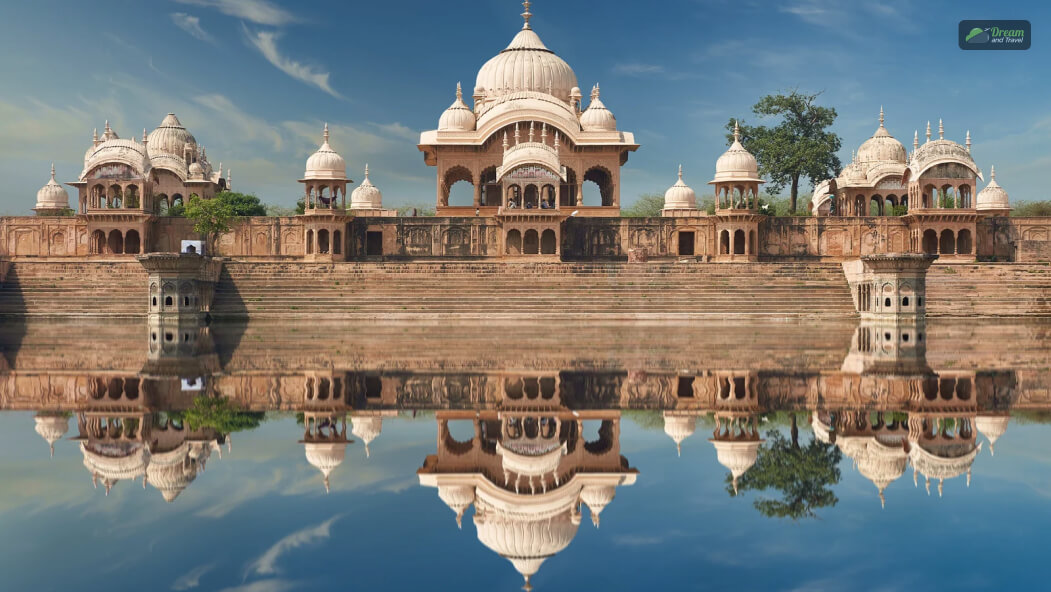
Kusum Sarovar is located at a distance of 26 km from Barsana. It is very close to the Sri Sri Krishna Balaram Mandir or ISKCON Vrindavan temple.
Kusum Sarovar means flower lake. Radharani used to collect kusum or flowers for Lord Krishna from here.
13. Radha Kund
Radha Kund is the last place I visited in Barsana. It is near the Govardhan Hill and is the place where Radha and Krishna used to meet.
Devotees take a dip in the water of Radha Kund for spiritual cleansing.
What Are The Four Hills Of Barsana? Why Are They So Famous?
The four hills of Barsana are:
- Bhanugarh
- Maangarh
- Daangarh
- Vilasgarh
Bhanugarh is the peak where the palace of the Maharaj Vrishabhanu, the father of Radharani, is located. It also houses the famous Radharani temple of Barsana.
The Maangarh has the Maan Mandir. Further, Daangarh gets its name from the place of tax collection and charity. Here, Krishna and his mates used to stop Radha and other Gopis and collect yoghurt and butter.
Vilasgarh, the fourth one, is located on the Vishnu Hill, and it is not a part of the Brahma Hill.
Another version says that Bhanugarh, Maangarh, Daangarh, and Vilasgarh symbolize the four heads of Lord Brahma. He took the form of these hills to collect the boon and the dust of the lotus feet of Lord Krishna and Shri Radhika.
How Are The Barsana Hills Transforming Into Ecotourism Hotspots?
The Uttar Pradesh Government has started a project to transform the arid hills surrounding Barsana into verdant hills.
The UP Braj Teerth Vikas Parishad will first take up the 98-hectare area in Rakauli hill and will start restoration with activities such as plantation, fencing, and rainwater harvesting.
The project has already got an allocation of Rs 2.11 crore, and from the fund, Rs 1.30 crore has been dispensed, according to a senior government official.
Further, with the plantation of trees such as Dhaak, Peelu, and Kadamb, the ecological integrity and spiritual ambiance of Barsana will be maintained.
In this context, Shyam Bahadur Singh, CEO of the Parishad and Vice-Chairman of the Mathura-Vrindavan Development Authority, has told CNBC TV18,
“Barsana’s hills were once rich in natural beauty and spiritually significant, but over the years, they have been degraded due to neglect and exploitation.“
Barsana Places To Visit: Frequently Asked Questions (FAQs)
Here are the frequently asked questions and answers about the places to visit in Barsana.
Govardhan has Govardhan Hill, and a 21-km parikrama of the hill is the most revered religious activity here.
Shri Krishna lifted the Govardhan Hill on his little finger to save the villagers from the Wrath of Indra, who was angry with the villagers for worshipping the Govardhan Hill instead of him.
Other places to visit in Govardhan are Daan-Ghati Mandir, Raha Kund, Mansi Ganga Kund, Kusum Kund, and Mukharvind of ShreeNathji at Jatipura.
The best time to visit Barsana is from August to September or during the Radhastami Festival. Also, you can visit Barsana during the springtime or in the month of March to be a part of the famous Lathmar Holi celebration.
However, if you want to visit Barsana as a quiet spiritual solace, plan a visit in October.
It is not possible to visit all the places in Barsana in one day. So, if you are in Barsana for one day, visit the Radha Rani Mandir, Kirti Mandir, and Maan Mandir.
If you still have the time, you must visit Krishna Kund and Radha Kund.
You cannot miss peda, malpua, and rabri when you are in Barsana. Also, you must try Bedmi Puri with sabzi. End your meal with lassi.
I love Mathura Peda, and I also brought some home.
You can take the stairs, as I did, to climb the Barsana Radharani temple. However, if you have mobility issues, you can take a ropeway ride starting from the bottom of the Brahmanchal mountain.
The ropeway ride covers around 300 meters of distance in 5-7 minutes and can take 72 pilgrims per hour.
If you are taking a one-way trip, it will be INR 60, and for a round trip, it will be INR 100.
Barsana does not have a river. However, like the entire Braj Region, the River Yamuna is a significant part of life in Barsana. Vrishabhanu Maharaj discovered Radha floating on a lotus leaf in the Yamuna River.
No, Braj and Vrindavan are not the same. Vrinadavan is a historical and spiritual town in the Braj Region of Uttar Pradesh.
Like Vrindavan, Barsana, Nandgaon, Mathura, and Golul, all are located in the Braj Region.
Radhastami, or the birth date of Radha, and Lathmar Holi are the two major festivals of Barsana. Radhastami is observed in August-September, and Lathmar Holi is celebrated in March.
